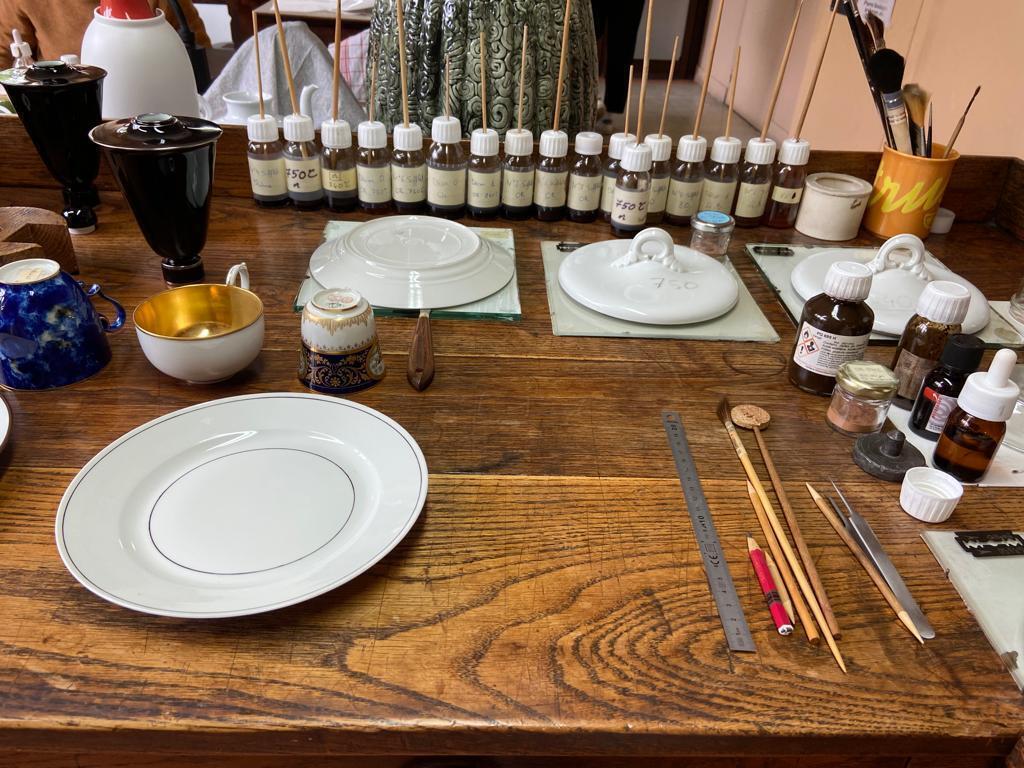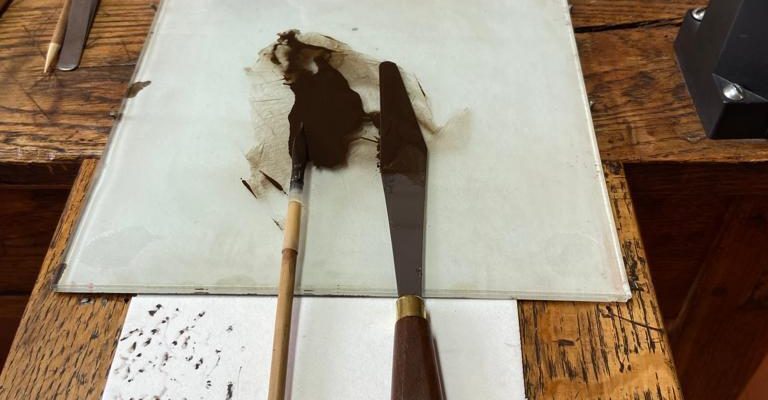100% creation takes up its summer quarters in Sèvres: focus on crafts. Today, we have an appointment with Benjamin Juillard, gilder spinner. In the gilding spinning workshop, all the decorative elements on the works and pieces produced by the Manufacture de Sèvres are made from gold, platinum, silver or colours, using a brush and freehand. The most commonly used precious metal is pure 24-karat gold. This step is inseparable from the decorations of the Manufacture de Sèvres.
I come to underline certain features of each of the pieces with colors, platinum or gold.
Benjamin Juillard, gilder spinner
The gold that is on my palette is brown in color. I mix powdered gold with liquid gold and this liquid gold contains essential oils and during cooking, all the essential oils, including the essential oil of lavender which I add later, will evaporate. Only powdered gold will remain on the coin.”
” We bake the pieces between 600 and 850 degrees. If I make a mixture that is too greasy by adding too much lavender essential oil, for example, it will fuse. Instead of making something thin, it will thicken. It can also make drips, if it’s horizontal and at the level of the extra thickness if I make a mixture that is unfortunately a little too consistent during cooking, it risks jumping, that is to say that the gold will be lumpy in one place and will blow up the enamel and you will have to start over from the beginning. »
Born in Versailles, he discovered ceramics around the age of 10. As part of his training course, he did a brief internship at the Manufacture of Sevres. After having obtained his national diploma in ceramic and digital crafts and design, he arrives at the Manufacture de Sèvres in 2021 after passing the entrance examination. Here, the work is done freehand from a model or following the instructions of an artist for a contemporary work. This profession of patience and rigor allows you to build skills and learn throughout your career. ” The first year is essentially an internship year where we will learn the trade. We are going to work, first, with colors like scales with nets on different pieces. Then we are going to make the exercises more complex and then move on to cups, to make garnishes on handles. And once we’ve done a whole range of parts, we’ll be able to move on to real orders and go to gold especially. »

To make the threads, a bevelled brush called a “whistle” brush is used, which allows you to have a large reserve of gold, silver, paint or platinum in order to place the threads. ” I basically use a whistle brush which allows me to do all the threads. I use gold. This is what I use almost every day, in powder, liquid gold and I just mix it with lavender essential oil. I have my palette on which, with my knife, I make my mixtures, my preparations. You should know that the gold, when it arrives at the Manufacture, it is in ingot form. It will be processed in a laboratory within the Manufacture itself. Then, you will have to prepare it with a fondant, a material that will allow the gold to be fixed on the pieces during cooking. All this we have to do in the workshop. There are proportions to respect, do not be mistaken. The dosages are defined in relation to the shape of the piece, the paste of the piece and also to its decoration. We will do different fondant dosages and we will even change it according to what we want. »
Find all the episodes of 100% Création on:
Apple Podcast Castbox Deezer Google Podcast Podcast Addict Spotifyor any other platform via the RSS feed.
